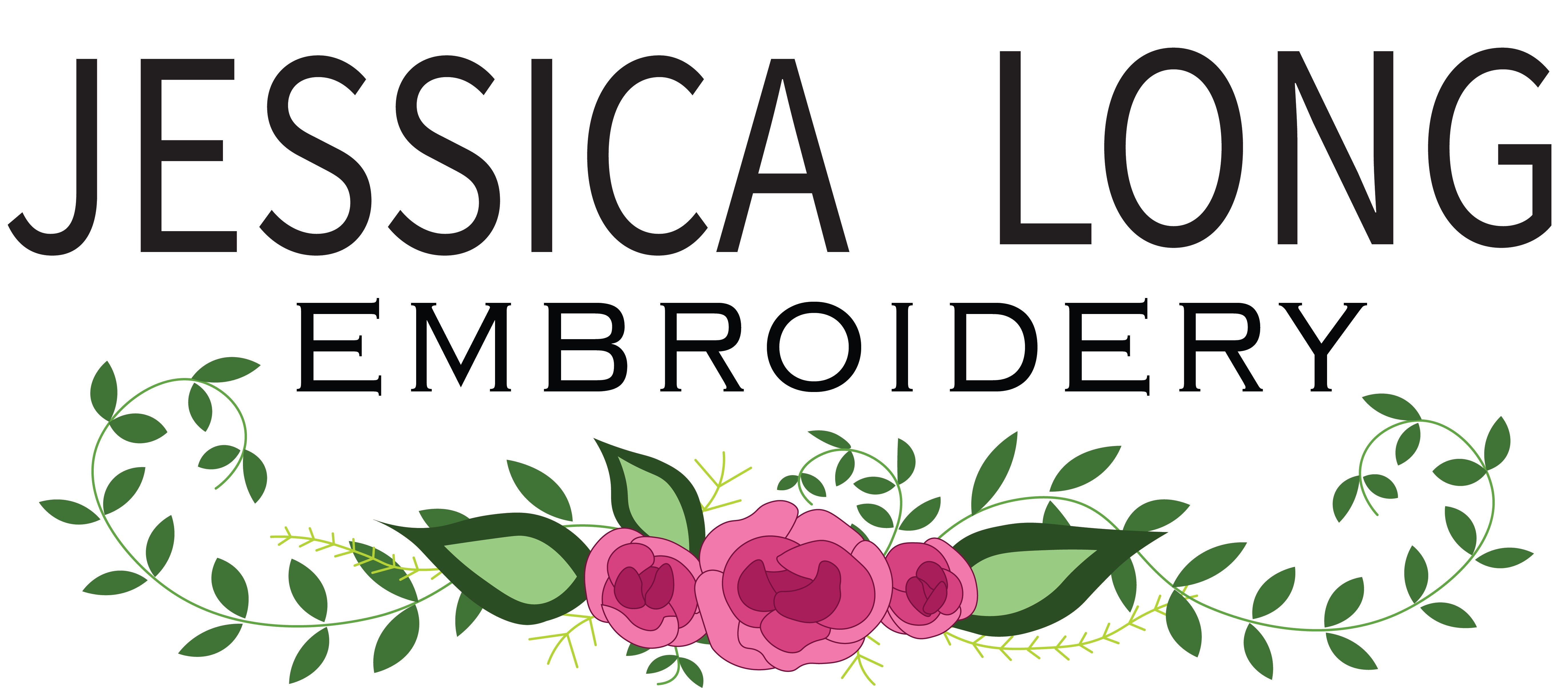Fishbone stitch is a favorite for leaves but it is a fairly versatile stitch that can be used for filling other shapes. Before getting into some fun variations here is a little refresher diagram and video.

In general, we move back and forth from the starting stitch (center line) starting at the top of the leaf and work down the sides of the outline. The stitches come up at the top and cross each other mid-leaf before going back down through the fabric. OR, as in the diagram, come up at A and then cross over the center line to B along the edge of the leaf outline. Come back up at C and cross over to D. The diagram then shows the "sewing" method of crossing over horizontally to come up at E.
Clearly I do not maintain a consistent stitch direction (top down versus bottom up) while working this stitch. I have not experienced any problems working the stitch in this manner beside confusing people trying to follow me. Please see the video below with two colors of thread for a real time video with consistent stitch direction.
Now let's look at fishbone versus raised (or overlapping) fishbone stitch. In the original version the stitches need only be long enough to overlap the previous stitches. With raised fishbone we extend the stitches all of the way to the edge of the shape we are filling. Once complete this stitch has more volume at the base than the original fishbone.
Now what about the angle of your stitches? I like to think of my angle as average but I am biased. In general my angle widens towards horizontal as I work my way down the leaf. You can also play with more sharp (closer to parallel with the center vein) and more flat (closer to horizontal to the center vein) angles to get different looks.

If you have a curved leaf shape you want to fill you will need to compensate by compressing the stitching on one side and increasing the distance between stitches on the other.

Here's a video showing how to work the fishbone stitch in a shape with cutouts using variegated floss:
Next, here's a little more fun using two strands of floss in different colors. I tried to be consistent with my stitch direction in this video.
Finally, here's two more variations in the photo below. For the large leaves I used three different colors to get an ombre look. For the small leaf near the off-white daisy I added a finishing straight stitch down the center line of the shape. This stitch does hide the braided center but it can be a fun variation.

